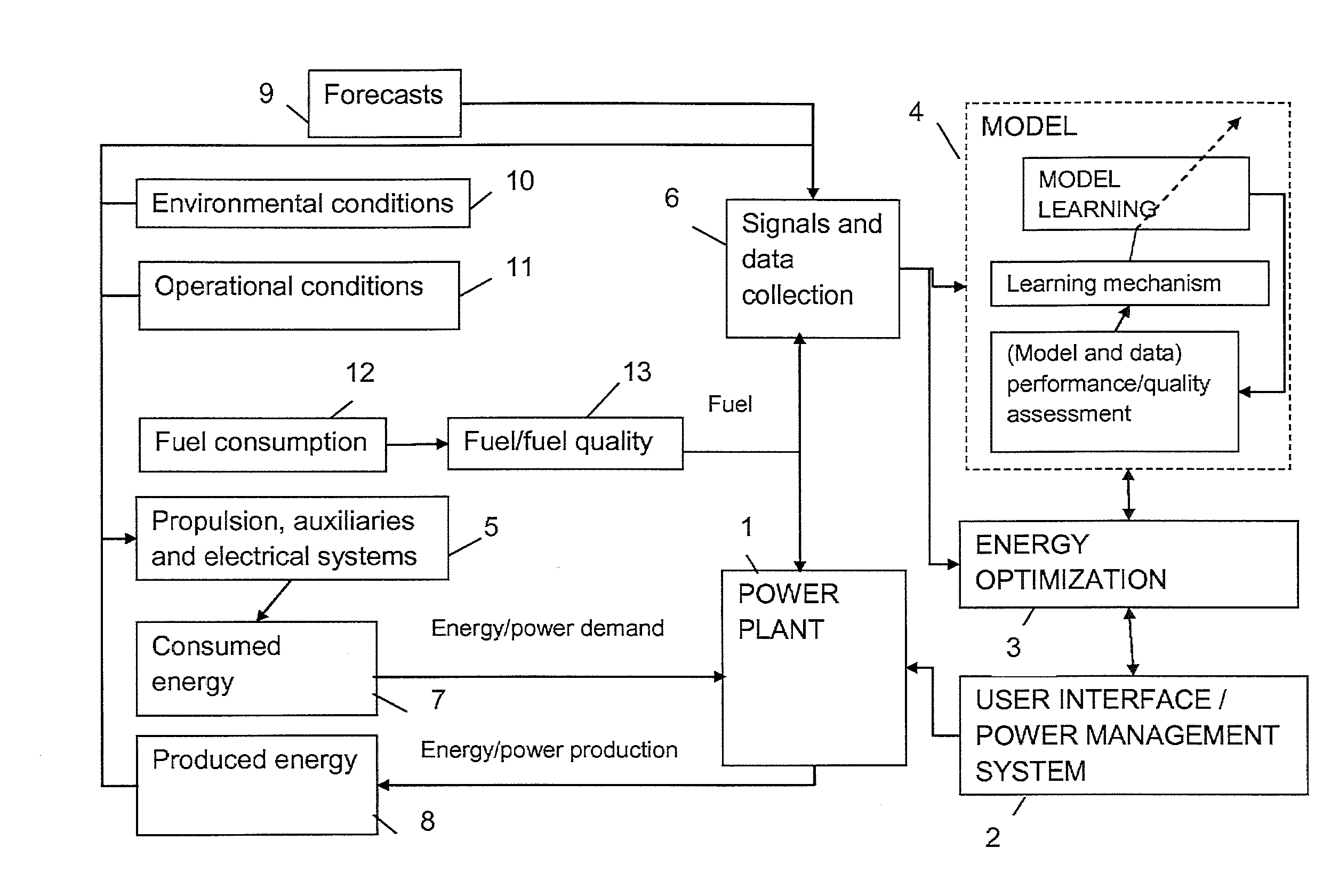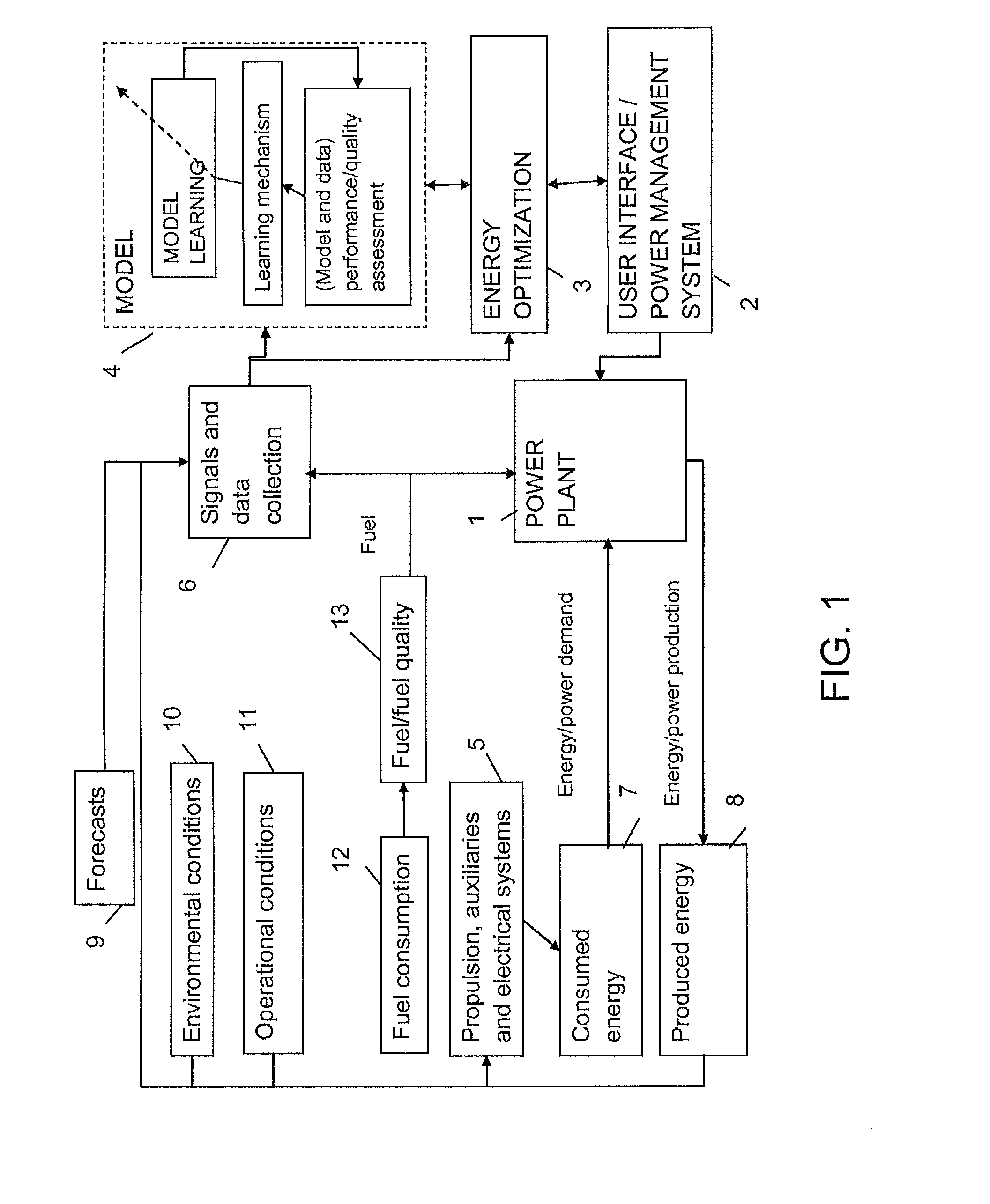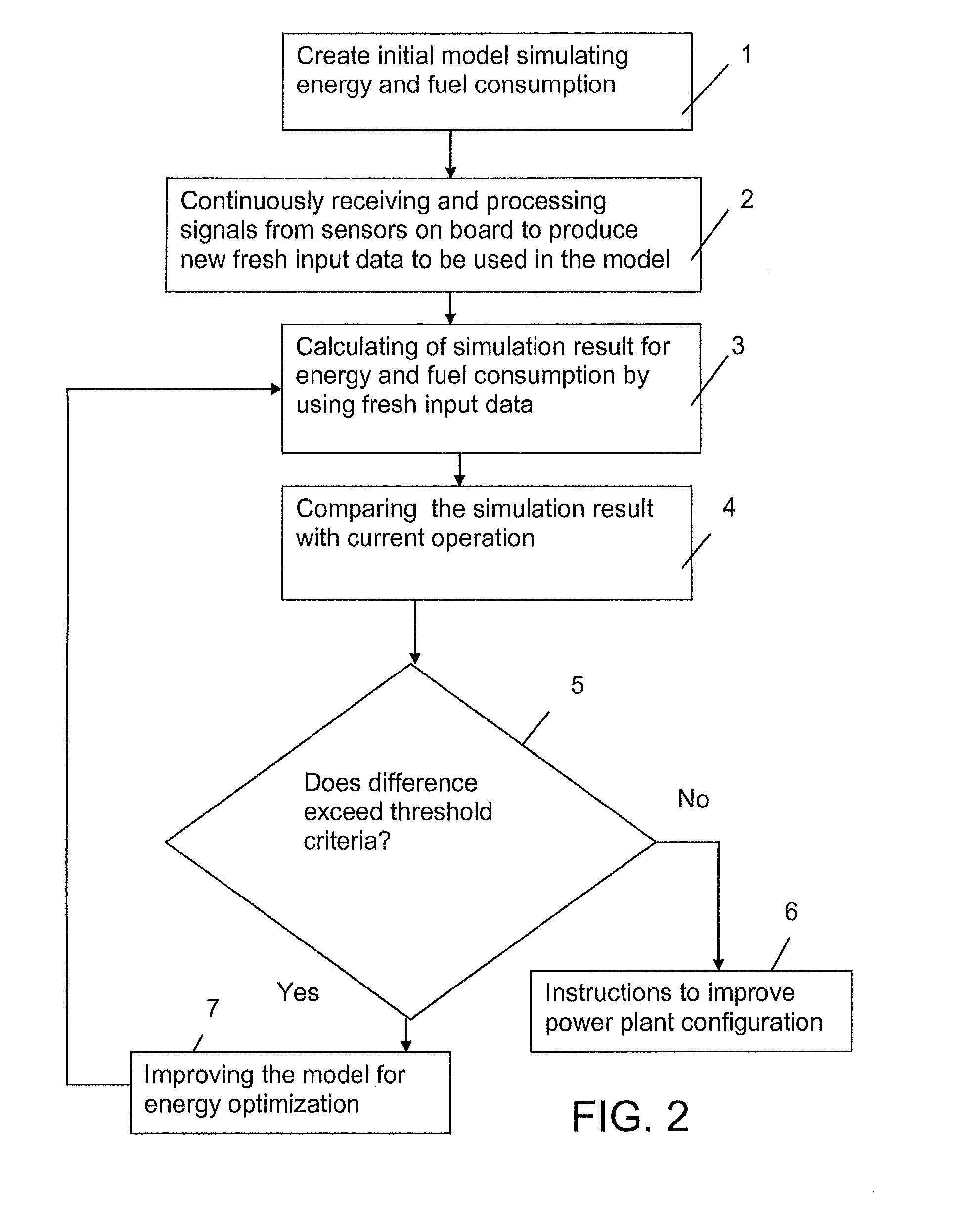Method and system for predicting the performance of a ship
a technology for predicting the performance of ships and ships, applied in the direction of vessel construction, process and machine control, instruments, etc., can solve the problems of reducing the reliability of models, the inability to predict and the inability to meet the requirements of ship operation, etc., to improve the operation of ships, the effect of predicting the total energy and fuel consumption
- Summary
- Abstract
- Description
- Claims
- Application Information
AI Technical Summary
Benefits of technology
Problems solved by technology
Method used
Image
Examples
first embodiment
[0039]FIG. 1 presents the invention in the form of a block diagram. In this embodiment the invention is used for predicting the energy balance of energy consuming devices on a ship and the fuel consumption, whereby the model simulates the performance of the power plant as a function of the power plant configuration.
[0040]FIG. 1 illustrates the interactivity between the control system of the ship, the conditions on board, and the energy production and consumption and fuel consumption. The control system includes the model for simulating the performance of the ship and the function of energy optimization, which are used in the invention to improve the model and to determine the most fuel efficient power plant configuration to produce the currently required energy.
[0041]Energy consuming devices in the vessel are those relating to propulsion energy, whose duty is to move and guide the vessel from the port of departure to the port of destination. Other energy consuming devices are partia...
second embodiment
[0083]FIG. 3 presents the invention in the form of a block diagram. In this embodiment the invention is used for vessel floating position, such as trim optimization, whereby the model simulates the performance of the ship.
[0084]FIG. 3 illustrates the interactivity between the control system of the ship, the conditions on board, and the vessel floating position. The control system includes the model for simulating the optimum vessel floating position. This means the trim, list or draft even if in the following text, for simplicity, sometimes only the trim is mentioned
[0085]Also in the second embodiment of the invention used for vessel floating position optimization, signals on board are registered. Such signals might include weather, wave, and sea current data as well as information of route and schedules. These signals describe external conditions, operational parameters like the draft, speed, use of stabilizers, equipment condition of e.g. hull, propellers and machines and factors ...
PUM
 Login to View More
Login to View More Abstract
Description
Claims
Application Information
 Login to View More
Login to View More - R&D
- Intellectual Property
- Life Sciences
- Materials
- Tech Scout
- Unparalleled Data Quality
- Higher Quality Content
- 60% Fewer Hallucinations
Browse by: Latest US Patents, China's latest patents, Technical Efficacy Thesaurus, Application Domain, Technology Topic, Popular Technical Reports.
© 2025 PatSnap. All rights reserved.Legal|Privacy policy|Modern Slavery Act Transparency Statement|Sitemap|About US| Contact US: help@patsnap.com



